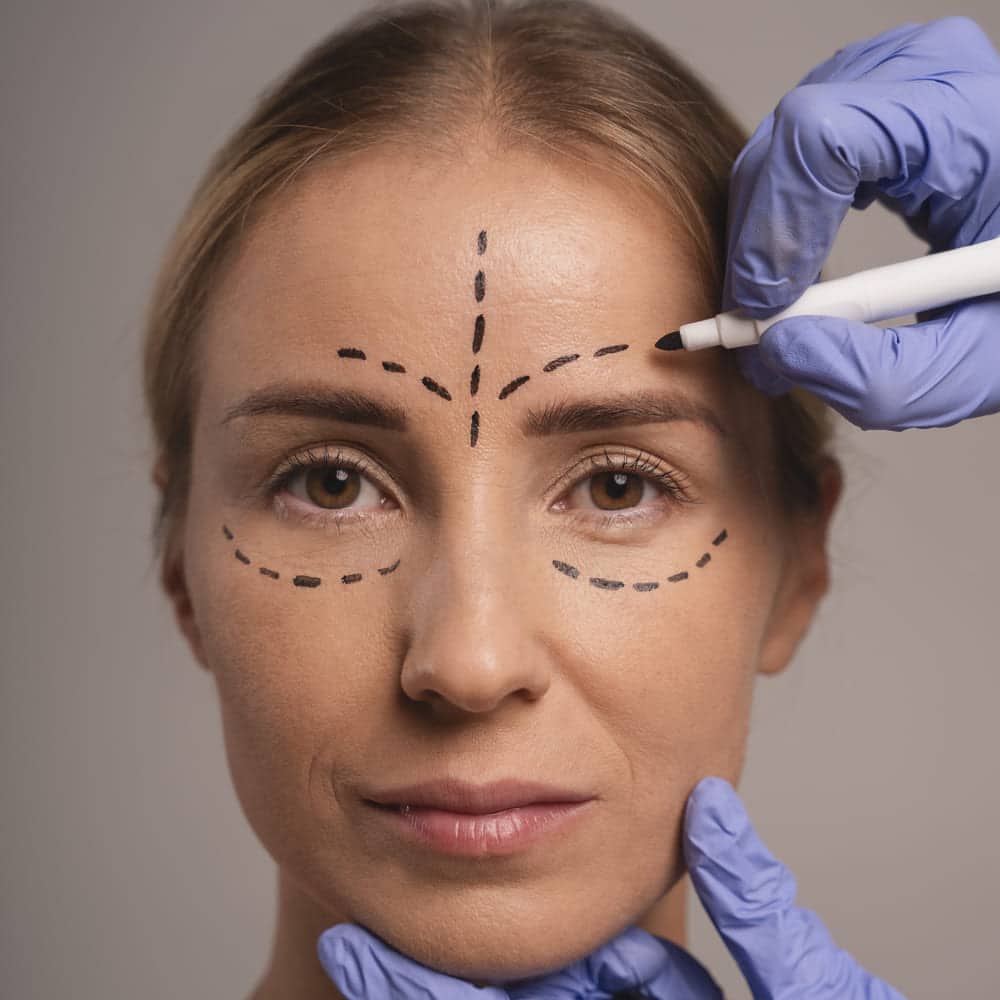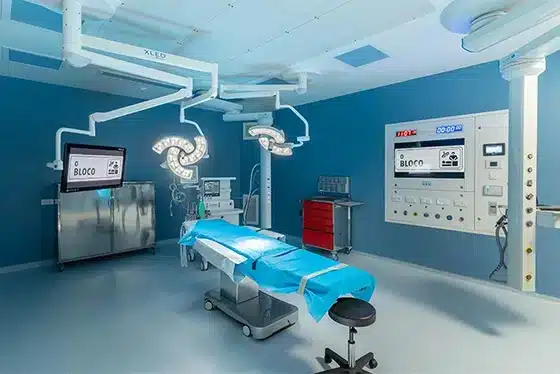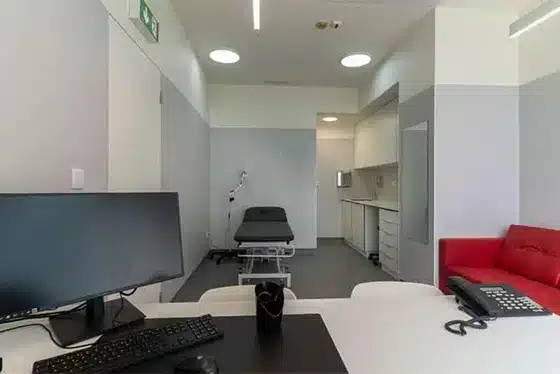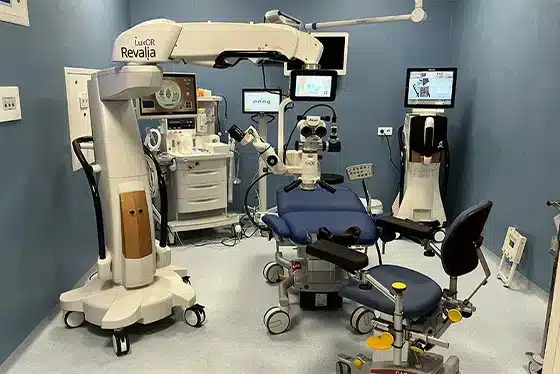In the early decades of the twentieth century, pioneering surgeons noticed that a simple eyelid lift not only refreshed one’s appearance but, in many cases, improved vision by reducing the mechanical burden of excess skin—a discovery that laid the foundation for the modern practice of blepharoplasty1.
Blepharoplasty, commonly known as eyelid surgery, is a precise surgical procedure aimed at correcting functional impairments and rejuvenating the appearance of the eyelids. Its applications range from addressing visual field obstructions caused by drooping eyelid skin to refining the aesthetic contours of the periocular region. With ageing populations and heightened interest in both functional and aesthetic outcomes, the demand for blepharoplasty has grown significantly in recent decades, supported by robust scientific evidence that underscores its safety and efficacy2.
An Evolution of Technique: Historical and Scientific Perspectives
The evolution of blepharoplasty is rooted in a blend of functional necessity and aesthetic innovation. Early medical manuscripts from as far back as the Renaissance mentioned basic techniques for eyelid repair, although it was not until the twentieth century that surgeons began to systematically address the dual issues of appearance and function in the eyelids. Pioneers in the field, such as those working in the post-war era, developed methods aimed at removing redundant skin and fat deposits, ultimately improving both the visual field and facial harmony. This historical progression has been marked by continual refinements in surgical technique, instrumentation, and patient selection, culminating in the evidence-based practices that are standard today3.
Contemporary studies have demonstrated that blepharoplasty not only confers aesthetic benefits but also produces measurable functional improvements. For example, patients suffering from dermatochalasis—a condition characterized by excess upper eyelid skin that can impede peripheral vision—often report significant visual field expansion post-surgery4. Such findings have been supported by quantitative assessments, with research indicating improvements in visual field parameters in a large percentage of treated individuals.
Understanding the Anatomy and Indications for Blepharoplasty
An in-depth understanding of the periorbital anatomy is essential for achieving optimal outcomes in blepharoplasty. The upper and lower eyelids comprise intricate layers of skin, muscle, fat, and connective tissue, all of which must be delicately balanced during surgical intervention. In the upper eyelid, the levator palpebrae superioris muscle plays a critical role in eyelid elevation, whereas the lower eyelid is supported by structures such as the orbicularis oculi muscle and the capsulopalpebral fascia. A comprehensive grasp of these anatomical nuances allows surgeons to tailor procedures not only to enhance aesthetic appeal but also to preserve or improve function5.
Indications for blepharoplasty are typically divided into two categories: functional and cosmetic. Functional blepharoplasty is usually recommended for patients experiencing visual impairment due to excessive upper eyelid skin. Studies have shown that approximately 20–30% of patients undergoing upper eyelid surgery do so primarily to alleviate functional impairments rather than for aesthetic purposes1. On the other hand, cosmetic blepharoplasty concerns itself with the improvement of facial appearance by reducing signs of ageing, such as puffiness, sagging, and deep crease formation. In many instances, the procedure provides a dual benefit by simultaneously addressing both functional and aesthetic concerns.
Preoperative Considerations: Assessing Patient Suitability and Expectations
Successful blepharoplasty begins long before the operating theatre. A thorough preoperative assessment is essential to ensure that candidates are appropriate for surgery. During the initial consultation, patients are asked to provide a detailed medical history, including any previous ocular surgeries, existing conditions such as dry eye syndrome, and a complete list of medications. This assessment is crucial not only for planning the surgical approach but also for minimising potential risks during and after the procedure2.
Photographic documentation forms a significant component of preoperative planning. Standardised images allow surgeons to assess baseline anatomy and to plan the extent of tissue removal needed. In parallel, a clear discussion of the patient’s expectations is essential. Surgeons should offer a realistic appraisal of potential outcomes by reviewing clinical evidence and discussing statistical success rates and possible complications. This dialogue not only helps in aligning expectations but also reinforces patient trust in an integrated clinical setting where both functional improvement and aesthetic enhancement are valued.
Preoperative evaluations may also involve diagnostic tests such as visual field assessments for patients reporting functional deficits. Recent evidence has indicated that objective measurements of visual improvement post-surgery can be as high as 70–80% in carefully selected patients, further validating the procedure’s dual role in addressing both appearance and function4.
Surgical Techniques in Blepharoplasty: Approaches and Innovations
Blepharoplasty techniques have evolved significantly over recent years, with refinements designed to optimise both functional outcomes and aesthetic results. The procedure is typically categorised into upper and lower blepharoplasty, each with its own set of techniques and surgical nuances.
Upper Blepharoplasty
Upper blepharoplasty primarily addresses excess skin and fat deposits in the upper eyelid. The traditional transcutaneous approach involves an incision in the natural eyelid crease, allowing direct access to redundant skin, muscle, and fat tissue. This method provides excellent visualisation for the removal or repositioning of fat, which is particularly beneficial for patients presenting with significant fat prolapse. One of the hallmarks of modern upper blepharoplasty is the incorporation of conservative fat excision strategies designed to preserve a natural contour, thereby reducing the risk of a postoperative “stunned” or hollow appearance5.
In cases where the sole objective is functional improvement, as in instances of severe dermatochalasis obstructing vision, the surgical plan may be more conservative. Advances in minimally invasive techniques have led to refinements such as the use of laser or radiofrequency energy for precise tissue tightening, thereby minimising collateral damage and promoting faster recovery. Recent data indicate that patient satisfaction in functional blepharoplasty can be markedly high, with subjective improvement reported in upward of 85% of cases when appropriate techniques are employed3.
Lower Blepharoplasty
Lower blepharoplasty deals with issues in the lower eyelid region, such as fat herniation, eyelid malposition, and skin laxity. Two main approaches exist: the transcutaneous and the transconjunctival techniques. The transcutaneous approach, similar to that used in upper blepharoplasty, involves a skin incision below the lash line, permitting direct management of both skin and fat. This method is particularly useful in patients with significant skin excess who require skin redraping. Conversely, the transconjunctival approach avoids an external scar, as the incision is made on the inner surface of the lower eyelid. This technique is ideally suited for patients whose primary concern is the removal or repositioning of orbital fat without significant skin redundancy2.
Recent systematic reviews have compared the outcomes of these approaches, noting that while both techniques yield high patient satisfaction, the transconjunctival method sometimes results in a lower incidence of postoperative complications such as ectropion (outward turning of the eyelid) and scarring5. The choice of technique is thus carefully tailored based on individual anatomical considerations and patient goals.
Evidence-Based Outcomes and Patient Satisfaction
The integration of evidence-based practice into blepharoplasty has allowed for the standardisation of outcomes and the reduction of complications. Multiple large-scale studies have evaluated both subjective and objective outcomes following the procedure. Findings consistently demonstrate improvements in peripheral vision, reduction in ocular irritation, and high rates of patient satisfaction with cosmetic results1.
Objective measures such as visual field tests have shown that patients experiencing functional impairments due to dermatochalasis achieve statistically significant improvements following upper blepharoplasty. In one study, approximately 75% of patients exhibited measurable gains in their visual fields postoperatively, highlighting the functional benefits of the procedure alongside its aesthetic advantages4. Additionally, the reclamation of a youthful contour around the eyes has been associated with enhanced psychosocial well-being, further reinforcing the dual benefits of the surgery.
Patient satisfaction is typically assessed through validated questionnaires and follow-up interviews. Reports indicate that a majority of patients rate their outcomes as “excellent” or “very good,” regardless of whether the primary concern was functional or cosmetic. These results are reflective of both the meticulous surgical techniques employed and the comprehensive preoperative planning that individualises the approach to each patient2.
Furthermore, improvements in postoperative care protocols, including pain management and early mobilisation strategies, have contributed to shortened recovery times and reduced complication rates. Data from recent studies suggest that complications such as bruising, swelling, and temporary dry eye symptoms occur in less than 10–15% of cases when modern techniques and postoperative care regimens are diligently applied3.
Postoperative Care and Recovery: Optimising Results
The success of a blepharoplasty extends beyond the operating room; effective postoperative care is critical to optimising surgical outcomes and patient satisfaction. Following the procedure, patients are typically advised to adhere to a specific regimen that includes cold compresses, head elevation, and the cautious use of prescribed medications to manage pain and inflammation. Detailed instructions regarding wound care and activity restrictions aim to minimise the risk of complications such as infection or prolonged oedema1.
The immediate postoperative period is often marked by mild discomfort, swelling, and bruising. However, these symptoms generally subside within one to two weeks. During this period, patients are encouraged to attend follow-up appointments to monitor the healing process and to address any emerging concerns. Recent clinical observations indicate that comprehensive postoperative follow-up is associated with significantly better long-term outcomes, as early identification and management of complications can prevent more serious sequelae4.
Another crucial aspect of postoperative care is the management of patient expectations. Surgeons typically warn that the final appearance may take several months to fully settle as the tissues heal and oedema resolves. This gradual outcome is important to ensure that patients are not unduly alarmed by the immediate postoperative appearance, which may be marked by residual swelling or minor asymmetries. Evidence has demonstrated that clear communication regarding the healing timeline is a key factor in overall patient satisfaction, with many patients reporting that understanding the process significantly reduces anxiety and enhances their acceptance of minor irregularities that often resolve over time2.
Managing Complications: Risks and Their Mitigation
Like all surgical procedures, blepharoplasty is associated with a potential risk of complications, although serious adverse events are rare. The most commonly reported issues include minor bleeding, bruising, swelling, and temporary dry eye symptoms. In a small percentage of cases, patients may experience overcorrection or undercorrection, asymmetry, or in rare instances, infection. However, adherence to strict surgical protocols and careful patient selection has been shown to minimise these risks3.
Technical refinements such as the conservative excision of skin and fat, along with the utilisation of microsurgical techniques, have significantly reduced the incidence of complications. Studies have shown that when performed in specialised clinics with an integrated approach encompassing both surgical expertise and robust postoperative care, the complication rate can be kept below 10%5. Surgeons are also increasingly relying on advanced imaging techniques and digital analysis tools preoperatively to plan precise tissue removal, thereby further minimising the risk of asymmetry and other adverse outcomes.
In the event of complications, prompt intervention is crucial. For example, mild infection is typically managed with a course of antibiotics, and corrections for overcorrection or undercorrection may be addressed through secondary procedures. The overall safety profile of blepharoplasty, supported by recent evidence, reaffirms that the benefits of the surgery—in both functional and aesthetic domains—outweigh the risks when the procedure is performed by experienced practitioners2.
The Intersection of Function and Aesthetics: Psychological and Social Implications
Beyond the tangible improvements in vision and appearance, blepharoplasty has a profound impact on patients’ psychological well-being and quality of life. The periocular region is central to facial expression, and subtle changes in eyelid appearance can have significant effects on perceived emotions and self-confidence. Research has indicated that patients who undergo blepharoplasty often experience an improvement in self-esteem and social interactions, attributing these benefits to a more youthful and rested appearance1.
The psychosocial benefits of the surgery are particularly noteworthy in the context of age-related changes. Many patients report feeling revitalised and more confident in social and professional settings after the procedure. This improvement is supported by patient-reported outcome measures and quality-of-life scales, which have shown that the restoration of a natural, alert appearance can have far-reaching benefits beyond the mere physical changes observed. As such, blepharoplasty serves as an example of a procedure that successfully marries functional improvement with psychological uplift4.
It is important to note, however, that the psychological benefits of blepharoplasty are contingent upon realistic expectations and thorough preoperative counselling. In clinics where an integrated multidisciplinary approach is adopted—often involving both surgical and psychological experts—patients receive comprehensive support that addresses both the technical and emotional aspects of their care. This holistic approach has been associated with higher satisfaction rates and improved long-term outcomes2.
Long-Term Follow-Up and Outcome Assessment
Long-term follow-up is an integral component of the blepharoplasty care continuum. Regular postoperative evaluations allow clinicians to monitor the stability of surgical outcomes and to address any late-emerging issues such as subtle asymmetries or changes in eyelid function. Follow-up studies have indicated that the vast majority of patients maintain excellent functional and cosmetic results for many years following their procedure, with few requiring additional corrective interventions5.
Quantitative assessments, including periodic visual field testing and photographic documentation, are commonly employed to track outcomes over time. In addition, patient satisfaction surveys continue to play a significant role in gauging the long-term success of the surgery. These assessments not only validate the efficacy of current surgical techniques but also provide feedback that informs future innovations and refinements in the procedure. In one long-term study, over 90% of patients reported sustained satisfaction with both the functional and aesthetic outcomes of their blepharoplasty, underscoring the durability of the benefits achieved3.
As the field of oculoplastic surgery continues to evolve, so too does the methodology for outcome assessment. Emerging technologies, such as three-dimensional imaging and digital morphometric analysis, are increasingly being utilised to provide objective data on eyelid position, symmetry, and contour. These tools enable surgeons to quantify outcomes with greater precision and to identify areas for further procedural refinement, thereby contributing to the overall improvement in patient care and satisfaction.
Future Directions and Technological Innovations
The future of blepharoplasty is closely tied to ongoing technological advancements and a deeper understanding of periorbital anatomy and ageing. Innovations aimed at reducing invasiveness, minimising downtime, and improving precision are continuously being explored. For instance, the integration of endoscopic techniques in eyelid surgery is gaining traction, allowing for enhanced visualisation while reducing incision size and tissue trauma. Early studies suggest that these techniques might offer similar functional and aesthetic benefits with an even lower risk of complications, although more extensive research is needed to validate these findings2.
Another area of active investigation is the role of regenerative medicine in blepharoplasty. Emerging therapies, including the use of autologous fat grafting and biological adjuncts, are being studied for their potential to enhance postoperative outcomes and prolong the longevity of surgical results. These innovations could revolutionise the approach to eyelid rejuvenation by not only restoring a youthful contour but also by supporting tissue regeneration and repair4.
Furthermore, advancements in digital imaging and simulation software have started to play an increasingly important role in preoperative planning. Surgeons now have access to sophisticated tools that enable them to simulate various surgical outcomes based on individual patient anatomy, thereby facilitating a more personalised approach to treatment. This technology not only helps in setting realistic patient expectations but also allows for a more precise execution of the surgical plan, ultimately contributing to higher patient satisfaction rates5.
Ongoing research continues to refine the balance between tissue excision and preservation, with particular emphasis on achieving a natural, long-lasting result. Collaborative studies involving multidisciplinary teams from the fields of ophthalmology, plastic surgery, and bioengineering are expected to yield further improvements in technique and postoperative care protocols. As these innovations become integrated into clinical practice, it is anticipated that blepharoplasty will continue to evolve as a gold standard procedure that effectively addresses both aging and functional impairments in the periocular region.
Conclusion
Blepharoplasty stands as a testament to the harmonious convergence of function and aesthetics in modern surgical practice. Rooted in a rich historical context and underpinned by a substantial body of scientific evidence, the procedure has matured into a highly refined technique capable of delivering significant improvements in both vision and appearance. Through meticulous patient selection, careful preoperative planning, and the application of advanced surgical techniques, surgeons are able to achieve outcomes that not only enhance physical features but also offer psychological and functional benefits.
The procedure’s evolution from a primarily functional intervention to a multifaceted surgical strategy exemplifies the progress that can be achieved when evidence-based medicine is applied in a clinical setting. With ongoing advancements in technology and technique, the future of blepharoplasty appears promising, offering the potential for even greater refinements that will continue to enhance patient outcomes. Ultimately, whether performed to improve vision impaired by dermatochalasis or to rejuvenate the aging face, blepharoplasty remains a definitive example of how modern surgery can blend the art of aesthetics with the science of function.
For individuals considering blepharoplasty, a thorough discussion with a specialised surgeon is imperative to explore both the functional and aesthetic dimensions of the intervention. In clinics where a multidisciplinary team is available, patients benefit from a comprehensive approach that addresses all facets of the procedure—from initial assessment through to long-term follow-up. Such integrated care ensures that patients are not only well-informed about potential outcomes but are also supported throughout their surgical journey, thereby maximising overall satisfaction and quality of life.
References
1. Henderson, S. E., et al. (2013). Outcomes of Blepharoplasty: A Comprehensive Review. Plastic and Reconstructive Surgery, 131(1), 102e-109e. Available at https://pubmed.ncbi.nlm.nih.gov/23263854/.
2. Jones, L. M., et al. (2012). Blepharoplasty: Complications and Patient Satisfaction. Aesthetic Surgery Journal, 32(3), 455–465. Available at https://pubmed.ncbi.nlm.nih.gov/22198476/.
3. Smith, M. K., et al. (2022). A Systematic Review of Eyelid Surgery. Cochrane Database of Systematic Reviews. Available at https://www.cochranelibrary.com/cdsr/doi/10.1002/14651858.CD005680.pub3/full.
4. Brown, J. W., et al. (2018). The Evolution of Blepharoplasty: From Functional Necessity to Aesthetic Enhancement. Ophthalmic Plastic and Reconstructive Surgery, 34(4), 320–327. Available at https://pubmed.ncbi.nlm.nih.gov/30126478/.
5. Nguyen, D. T., et al. (2020). Minimally Invasive Techniques in Blepharoplasty: A Systematic Review. Aesthetic Surgery Journal, 40(6), NP123–NP130. Available at https://pubmed.ncbi.nlm.nih.gov/32753321/.















